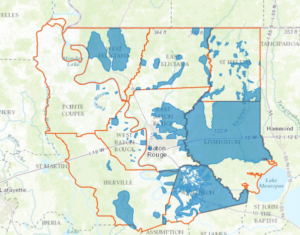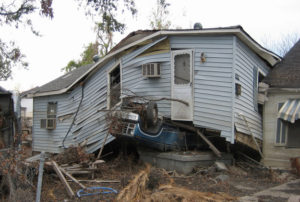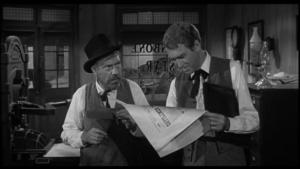 Mrs. T and I drove from Connecticut to Boston on Sunday to see a musical that I’ll be reviewing in Friday’s Wall Street Journal. Come Thursday I’ll be taking the train down to Washington, D.C., to see a play. From there I return to New York, at which point the summer will officially be over. It was, I rejoice to report, a perfectly lovely summer, the best I’ve had in ages. Mrs. T and I spent much of it on the coast of Maine and in our two favorite country retreats, doing nothing in particular and loving it. But all good things must come to an end, and the time has come for me to get back to work.
Mrs. T and I drove from Connecticut to Boston on Sunday to see a musical that I’ll be reviewing in Friday’s Wall Street Journal. Come Thursday I’ll be taking the train down to Washington, D.C., to see a play. From there I return to New York, at which point the summer will officially be over. It was, I rejoice to report, a perfectly lovely summer, the best I’ve had in ages. Mrs. T and I spent much of it on the coast of Maine and in our two favorite country retreats, doing nothing in particular and loving it. But all good things must come to an end, and the time has come for me to get back to work.
Not that I didn’t spend the whole summer working. Among other things, I made my debut as a stage director in Florida, opened yet another production of Satchmo at the Waldorf, and reviewed seventeen shows in six states and the District of Columbia, fewer than usual but more than enough to keep me on the jump.
On the other hand, I got to do most of my work in pretty places, and Mrs. T and I went on a full-fledged nine-day no-writing vacation, which for us is highly unusual. We also visited a wonderful art museum that was new to us, ate at a stupendously good hot-dog joint in Connecticut, and saw two brand-new movies, Love & Friendship and Hell or High Water, something that we rarely find time to do (though there aren’t all that many grownup-friendly movies to see these days!).
 Needless to say, I did pay a certain amount of attention to the news throughout the summer, so I’m very much aware of the Baton Rouge flood. In fact, the Great Flood of 2016 touched me personally, albeit at the safest of distances, since it resulted in the temporary postponement of the Louisiana premiere of Satchmo. And as I read one account after another of the terrible havoc that has been wrought by the rising waters, I thought—as many of you doubtless did—of Hurricane Katrina.
Needless to say, I did pay a certain amount of attention to the news throughout the summer, so I’m very much aware of the Baton Rouge flood. In fact, the Great Flood of 2016 touched me personally, albeit at the safest of distances, since it resulted in the temporary postponement of the Louisiana premiere of Satchmo. And as I read one account after another of the terrible havoc that has been wrought by the rising waters, I thought—as many of you doubtless did—of Hurricane Katrina.
Katrina struck New Orleans in 2005, well before Facebook and Twitter transformed the way in which postmodern Americans interact with the world. By then blogs were already common, but the establishment media had yet to figure out what effect they would have on the gathering and dissemination of news. On the other hand, I’d been blogging for two years, and I realized at once that my fellow bloggers had something important to contribute to the emerging story.
 Here’s what happened next, as I described it in this space a couple of days later:
Here’s what happened next, as I described it in this space a couple of days later:
Like many, perhaps most Americans, I didn’t realize until Sunday afternoon that a Category Five hurricane was headed for New Orleans. I’d spent the whole morning writing a long, involved posting about how I’d become disillusioned with the new Museum of Modern Art. I came up for air, turned on the TV, and discovered to my astonishment that the city about which I’d been writing for the past few months (I’m working on a biography of Louis Armstrong) was at high risk of being blown into the Gulf of Mexico.
Being a blogger, my snap reaction was to head for my iBook and find out what was what. I quickly discovered that lots and lots of people were posting on Hurricane Katrina. But while most of their postings included links to other blogs, no one had thought to assemble a one-stop list of stormblogs and other relevant sites. After bookmarking a few of the best ones, I got the idea to throw together an “About Last Night” posting called Live from Katrina. The first version, as I recall, contained links to a half-dozen blogs, most of which made mention of one or two other bloggers. I checked out every link I ran across and, when appropriate, added it to my original posting. Within an hour or two, other bloggers, including Jeff Jarvis, were linking to my list, which by then included a number of other informational sites. At that point it occurred to me to send an e-mail to Glenn Reynolds of Instapundit suggesting that he take a look at what I’d done. He linked to it a minute or two later, and the hits started pouring in.
That was when the Web began to work its own mysterious, self-sustaining magic. Stormblogs I didn’t yet know about started turning up in my referral log courtesy of the Instapundit link, and I in turn transferred them to my new blogroll, adding other useful links as I discovered them. By the time I went to bed at three-thirty that morning, I realized that my informal little list had turned into a potentially significant resource.
I awoke without benefit of alarm at seven and set to refining my list, indicating which blogs had been updated most recently and posting excerpts from the best ones. Within an hour or two I had created what was for all intents and purposes a manually operated aggregator page of Katrina-related sites. I was supposed to deliver a piece to Commentary at noon that day, but by mid-morning several other high-traffic pages, including MSNBC’s “Clicked,” National Review’s The Corner, and The Wall Street Journal’s Best of the Web, had linked to “Live from Katrina.” I felt I ought to keep on doing what I was doing, so I sent an e-mail to Neal Kozodoy, the editor of Commentary, asking him if he could extend my deadline for a day. He agreed on the spot, and I spent the rest of Monday updating “Live from Katrina” more or less continuously….
As Hurricane Katrina finally slowed down and Monday shuddered to a close, I stopped updating “Live from Katrina” and started thinking about the implications of what I’d been doing for the past two days. On the one hand, nothing could have been less typical of “About Last Night” than for me to have thrown myself head first into so unlikely an undertaking. Yet at the same time, nothing could be more characteristic of the new world of new media. One of the most distinctive properies of blogs, after all, is that they are instantly and infinitely malleable at the whim of the blogger. “About Last Night” is about art because Our Girl in Chicago and I want it to be about art. If we decided at noon tomorrow that it would henceforth be about hockey, or smoked salmon, there’d be nothing to stop us from changing course at 12:01. Instead, we decided to make a one-day detour into citizen journalism, and the blogosphere promptly sat up and took notice….
 To read these words eleven years later is to smile at their quaintness. I sound like a whiskery old ham-radio operator reminiscing about the marvels of Morse code. It’s easy to forget that blogging was still revolutionary in the days of Katrina. Witness this column by Michael S. Malone, which ABC News published on its website on September 1, 2005, the day before I finally wrapped up “Live from Katrina” and went back to blogging about the arts:
To read these words eleven years later is to smile at their quaintness. I sound like a whiskery old ham-radio operator reminiscing about the marvels of Morse code. It’s easy to forget that blogging was still revolutionary in the days of Katrina. Witness this column by Michael S. Malone, which ABC News published on its website on September 1, 2005, the day before I finally wrapped up “Live from Katrina” and went back to blogging about the arts:
In the midst of the mind-boggling disaster of Hurricane Katrina, we are also seeing an interesting—and unprecedented—technical phenomenon that may bode well for how we respond to these horrors in the future.
It has to do with the Internet, and what might be called “virtual newsrooms.” And it can involve, as in the case over the last few days with Katrina, the most unlikely people. Their role suggests that in the future, the process of getting important information—and perhaps even warnings—out to the world may be more fluid and dynamic than we have ever imagined…
Terry Teachout is one of America’s leading art critics. I’ve read his writings for years, first in journals such as Commentary, and most recently in the Wall Street Journal. With Laura Demanski (“Our Girl in Chicago”) Teachout also runs a cultural Web site at ArtsJournal.com called “About Last Night.” It is usually a potpourri of selections from Teachout’s reviews, asides about movies, diary entries of various museum visits, and interesting quotes from recent books read….
But, as Katrina hit, suddenly in the midst of the G.K. Chesterton quotes and Mark Morris dance reviews, Teachout inserted what he called a “stormblog.” Basically a list of links to bloggers operating within the hurricane zone, it quickly grew to nearly 30 sites—and became the essential place to go for first-person descriptions of the crisis. Ominously, throughout the storm, some of these sites would suddenly shut off—leaving readers to fear for the writers’ fates. Only now, as some have reached safety (and power) have they reappeared online to the considerable relief of the readers.
Teachout’s stormblog quickly became the essential source for anecdotal information during the disaster. The site, now beefed up with added links to traditional organizations, continues to be a key place to learn about what it is like to be in Katrina’s aftermath.
Nowadays, of course, it would never have occurred to me to turn this site into a “stormblog.” Twitter and Facebook long ago superseded blogs as the medium of choice for snap responses to the news of the day. Even so, more than a few of the beleaguered citizens of Baton Rouge took to the blogosphere to get the word out about the terrible effects of the Great Flood of 2016. What’s more, they did so well before the national news media, distracted as they were by the Trump Follies, started paying serious attention to what was happening in south Louisiana—and what they wrote made a difference.
 As for me, I’m still blogging, and I plan to keep it up for as long as it amuses me to do so. Devoted though I am to Twitter and Facebook, “About Last Night” remains the sturdiest of the three legs of my social-media triad, a home-grown, hand-cranked electronic printing press that lets me say whatever I want, whenever I want. Even when Mrs. T and I pack our bags and head for the hills, or the coast of Maine, you’ll find me doing business every weekday at the same old stand. I like it here.
As for me, I’m still blogging, and I plan to keep it up for as long as it amuses me to do so. Devoted though I am to Twitter and Facebook, “About Last Night” remains the sturdiest of the three legs of my social-media triad, a home-grown, hand-cranked electronic printing press that lets me say whatever I want, whenever I want. Even when Mrs. T and I pack our bags and head for the hills, or the coast of Maine, you’ll find me doing business every weekday at the same old stand. I like it here.


